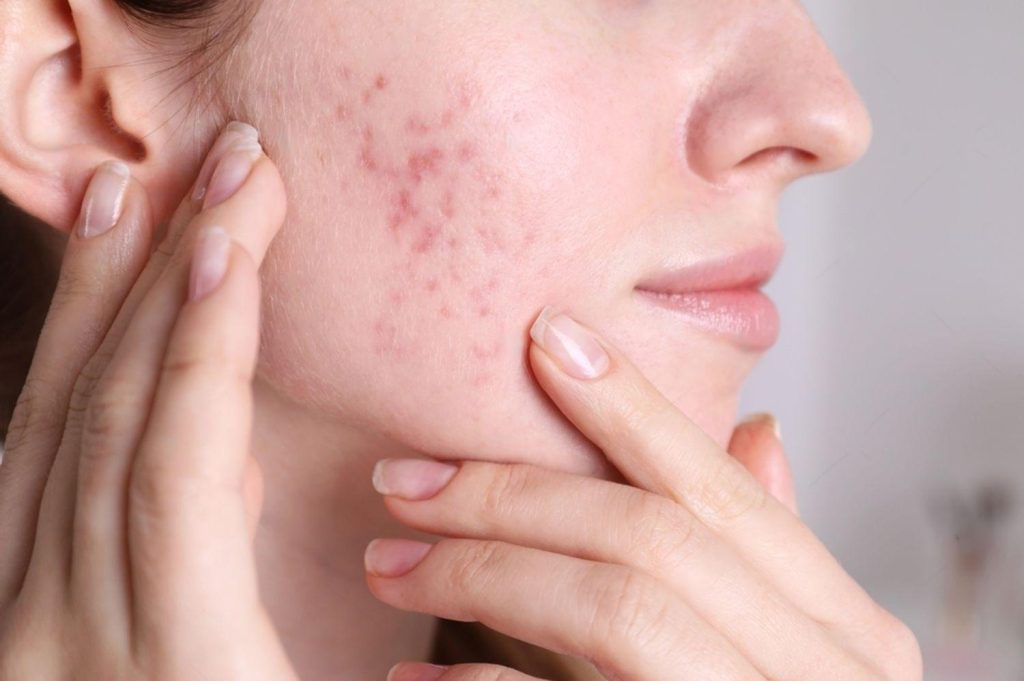Ever had those tiny red bumps that look like acne but just won’t budge—no matter how many spot treatments or scrubs you throw at them? You’re not alone. What you might be dealing with isn’t acne at all. It could be fungal acne, and it’s a completely different skin concern that requires a unique approach.
What Exactly Is Fungal Acne?
Fungal acne, officially called Malassezia folliculitis, is not actually acne. It’s a skin condition caused by an overgrowth of yeast—specifically, the Malassezia species—that naturally lives on your skin. Unlike bacterial acne that’s triggered by clogged pores and oil, fungal acne stems from a yeast imbalance in your hair follicles.
This condition leads to small, itchy, red bumps that often appear in tight clusters, especially on your chest, back, shoulders, or forehead. These bumps may look like typical whiteheads but often don’t respond to regular acne treatments.
How to Tell if It’s Fungal Acne
It’s tricky to tell fungal acne apart from regular acne, but there are key signs:
- Tiny, uniform red or white bumps
- Appear in clusters, not randomly
- Intense itching
- Found mostly on the upper back, chest, neck, or forehead
- Doesn’t improve with traditional acne treatments like salicylic acid or benzoyl peroxide
If you’re still not sure, a dermatologist can do a simple test to confirm if yeast is the culprit.
What Causes It?
Fungal acne is caused when the natural balance of yeast on your skin is disrupted—often by heat, humidity, or trapped sweat. When your skin becomes overly warm or moist, the yeast overgrows and clogs your hair follicles.
Common triggers include:
- Excessive sweating
- Tight, synthetic clothing
- Humid or tropical climates
- Oily skin or heavy skincare products
- Antibiotic use (which kills bacteria, giving yeast a chance to take over)
- Not showering after exercise
- Sharing towels or personal items
It’s worth noting that people with weakened immune systems or those on immunosuppressive medication may be more prone to flare-ups.
Is Fungal Acne Contagious?
Sort of—but not in the way you might think. You won’t “catch it” from a handshake, but it can spread in environments where skin is in close contact, like shared gym equipment, towels, or tight quarters. Still, the yeast needs the right conditions (like trapped sweat or heat) to cause a reaction.
Effective Ways to Prevent It
Prevention is often easier than treatment, and small changes can make a big impact. Here’s what helps:
1. Shower Right After Sweating
Don’t wait around in sweaty clothes. Shower as soon as you can after exercise. Use a gentle body wash and dry your skin completely—especially areas prone to fungal acne like your back and shoulders.
2. Switch to Breathable Fabrics
Wear loose, breathable clothes made of cotton instead of tight synthetic materials. This helps reduce heat and moisture buildup on the skin.
3. Cut Back on Heavy Products
Thick moisturisers or oil-based products can feed yeast and worsen fungal acne. Stick to lightweight, non-comedogenic skincare and avoid coconut oil or other occlusive ingredients until your skin clears up.
4. Watch Your Diet
Some research suggests high sugar and high-fat diets might contribute to yeast growth. Try cutting back on sugary snacks, refined carbs, and dairy if you notice frequent flare-ups. Adding more fresh veggies, whole grains, and water can support clearer skin.
How to Treat Fungal Acne (What Really Works)
The best way to fight fungal acne? Use antifungal ingredients—not typical acne medications.
One of the most dermatologist-recommended options is using antifungal shampoos that contain zinc pyrithione or ketoconazole. Yes, you read that right—shampoo on your chest and back. These ingredients are proven to reduce yeast on the skin.
✅ A great place to start is with a product like Happy Cappy Medicated Shampoo, which is specially formulated for conditions like Malassezia folliculitis. It’s gentle enough for regular use and effective at restoring balance without irritating sensitive skin.
Here’s how to use it:
- Apply to affected areas in the shower
- Leave it on for 2–5 minutes before rinsing
- Use it 2–3 times per week until symptoms improve
- Follow up with an oil-free moisturiser if needed
You might also consider using sulfur-based cleansers or topical antifungal creams if shampoo alone isn’t enough.
Don’t Forget About Lifestyle
Your skincare routine matters, but so do your daily habits:
- Wash workout gear and towels often
- Avoid reusing unwashed clothing
- Don’t over-exfoliate—it can irritate skin and worsen inflammation
- Change pillowcases and bedsheets regularly
If your fungal acne persists despite these efforts, it’s time to see a dermatologist. You might need prescription-strength antifungals to clear it fully.
Final Thoughts
Fungal acne is frustrating—especially when it’s misdiagnosed and mistreated. But once you know what you’re dealing with, you can take the right steps to calm your skin and stop the itch.
Remember, what works for bacterial acne might actually make fungal acne worse. So don’t waste time or money on the wrong products. Focus on targeted treatments like antifungal shampoos, breathable clothing, and cleaner skincare habits.
Most importantly, don’t stress. With the right care, your skin will bounce back.

